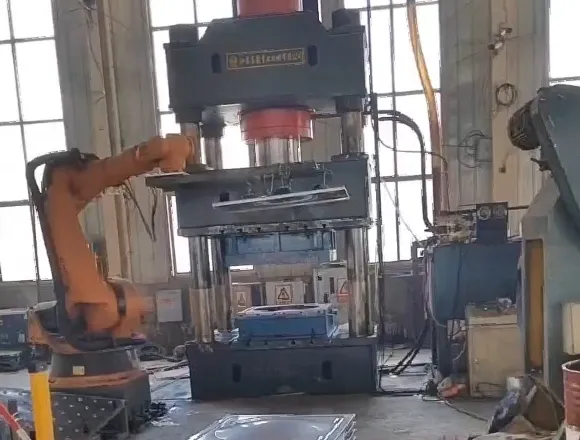loading...
- No. 9, Xingyuan South Street, Dongwaihuan Road, Zaoqiang County, Hengshui, Hebei, China
- admin@zjcomposites.com
- +86 15097380338
- Welcome to visit our website!
pressure tank
Understanding Pressure Tanks Essential Components for Various Applications
Pressure tanks play a crucial role in various industries and applications, ranging from water supply and irrigation systems to manufacturing processes and gas storage. Understanding what pressure tanks are, how they operate, and their diverse applications is essential for anyone looking to utilize this technology effectively.
What is a Pressure Tank?
A pressure tank is a vessel designed to hold liquids or gases at a pressure substantially different from the ambient pressure. Typically, these tanks are constructed from materials such as steel or reinforced plastic to withstand the inevitable internal stress caused by the pressurized contents. They come in various shapes and sizes, with different configurations suited for specific needs.
How Do Pressure Tanks Work?
The basic operation of a pressure tank relies on the principles of pressure and volume. When the tank is filled, the pump transfers fluid into the tank, compressing the air above the liquid surface. As a result, the pressure inside the tank rises. This pressurized air pushes the liquid out of the tank when needed, ensuring a consistent and reliable supply of fluid.
An important aspect of pressure tank operation is the pressure switch, which automatically turns the pump on or off based on the internal pressure of the tank. When the pressure drops to a predetermined level, the switch activates the pump. Once the desired pressure is achieved, the switch deactivates the pump, preventing over-pressurization and conserving energy.
Types of Pressure Tanks
Pressure tanks can be categorized into two main types bladder tanks and diaphragm tanks
.1. Bladder Tanks These tanks contain a rubber bladder or diaphragm that separates the air and water. As water enters the tank, it fills the bladder, compressing the air above it. This design helps maintain consistent pressure and reduces the frequency of pump cycling, which can prolong the life of the pump and improve energy efficiency.
2. Diaphragm Tanks Similar to bladder tanks, diaphragm tanks use a flexible membrane to separate air and water. However, the diaphragm is fixed at one end, preventing it from floating to the top. This type of tank is often used in smaller applications where precise pressure regulation is necessary.
Applications of Pressure Tanks
pressure tank

Pressure tanks have a myriad of applications across different sectors
- Water Supply Systems In residential and agricultural settings, pressure tanks are pivotal in maintaining consistent water pressure. They enable homes to have reliable water supply, even when consumption fluctuates. In irrigation systems, pressure tanks distribute pressurized water to ensure even coverage of crops.
- Heating Systems In heating systems, pressure tanks help maintain a stable pressure within the closed-loop system, ensuring optimal operation of boilers and hot water heaters.
- Natural Gas Storage Pressure tanks are also employed in the natural gas industry, where they store gas at high pressures for distribution. These tanks help regulate the flow of gas, ensuring a steady supply to end-users.
- Industrial Applications In manufacturing, pressure tanks are used to store various fluids under pressure for processes such as painting, coating, and chemical production.
Benefits of Using Pressure Tanks
1. Efficiency Pressure tanks reduce the need for constant pump operation, which can lead to significant energy savings. By maintaining pressure within the tank, the pump only activates when necessary, thereby extending its lifespan.
2. Consistent Pressure Delivery These tanks ensure a steady supply of pressurized liquids or gases, minimizing fluctuations and optimizing performance across various applications.
3. Space Saving Depending on the design, pressure tanks can be compact, saving valuable space in facilities or homes.
4. Improved System Reliability With consistent pressure delivery and reduced pump cycling, pressure tanks enhance the overall reliability of the systems they are integrated into.
Conclusion
Pressure tanks are indispensable components in numerous industries and applications. Their ability to store and regulate pressurized fluids and gases makes them vital for efficiency, consistency, and reliability. Whether for residential water supply, industrial manufacturing, or natural gas storage, understanding the function and benefits of pressure tanks is essential for their effective use. By integrating pressure tanks into systems, users can enhance performance while reducing energy consumption, ultimately leading to more sustainable operations.
-
GRP Structures: The Future of Lightweight, High-Performance EngineeringNewsJun.20,2025
-
FRP Water Tank: High-Performance Storage for Corrosive and Clean Water SystemsNewsJun.20,2025
-
FRP Square Tube: The New Industry Standard for Chemical and Structural ApplicationsNewsJun.20,2025
-
FRP Pultruded Profiles: The Ultimate Choice for Lightweight Structural StrengthNewsJun.20,2025
-
FRP Handrails: The Safer, Smarter, and Stronger Choice for Modern InfrastructureNewsJun.20,2025
-
FRP Grating: The Smart Solution for Durable, Lightweight Industrial FlooringNewsJun.20,2025
-
Why Choose a Galvanized Water Tank for Your Storage NeedsNewsMay.21,2025
